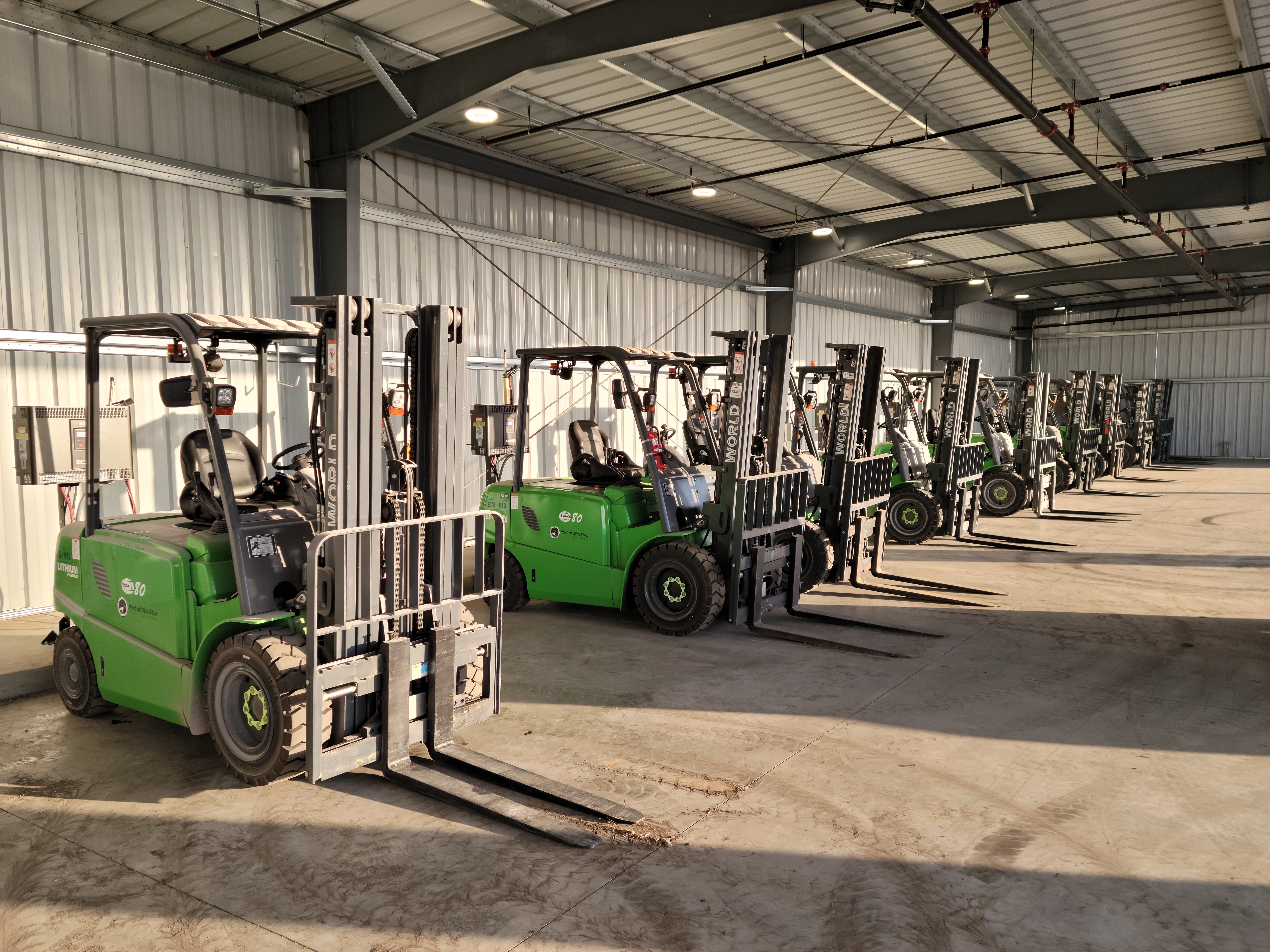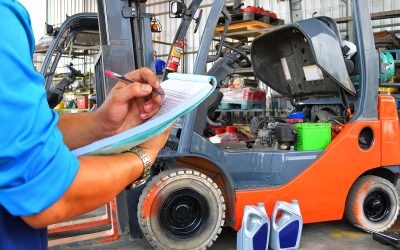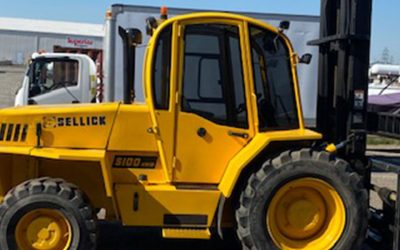Electric forklifts are becoming more popular for various applications, but you may need to learn more about using them properly before you invest in one. While these machines offer several advantages over internal combustion engine (ICE) forklifts, they also possess certain limitations—and, of course, like any other forklift, they require regular professional service to keep them reliable and safe.
We’ve been maintaining and repairing forklifts of all kinds for years, so we know quite a bit about how electric forklifts differ from other models and how to keep them running properly. Learn more about using an electric forklift below, and contact us for help if you have an electric forklift that needs professional attention.
How Are Electric Forklifts Different from “Normal” Forklifts?
Electric forklifts typically differ from forklifts with internal combustion engines in several ways:
Electric Forklift Pros
- Longer lifespans. Electric forklifts have fewer moving parts than ICE forklifts. As such, they tend to experience wear-and-tear more slowly—although it still happens eventually.
- Less maintenance. Electric motors don’t have spark plugs, valves, springs, pistons, or camshafts that need to be replaced on a regular basis. They do have rotors and bearings that can wear out, but there’s generally less to worry about—and less to fix.
- Better for the environment. Electric forklifts do not produce tailpipe emissions. Not only does this lower your carbon footprint; it also produces fewer chemicals that can affect the health of your operators and other nearby personnel.
- Less noise. Electric forklifts are significantly quieter than ICE models. As such, using an electric forklift can help protect the ears of nearby personnel and reduce the risk of the forklift drowning out sound from other potential workplace hazards.

Electric Forklift Cons
- Higher up-front costs. Electric forklifts tend to be more expensive up front than ICE forklifts. New electric forklifts often cost $20,000–$35,000, whereas new ICE forklifts with similar capacities tend to cost $16,000–$30,000.
- Frequent charging required. Electric forklifts must be charged each night before use to ensure their battery will last throughout a standard workday. This requires electric forklifts to be used near battery charging stations, limiting their range (especially outdoors).
- Not as powerful. Some gasoline, propane, and diesel forklifts have significantly larger load capacities than electric forklifts (however, these models can also be much more expensive).
Typical Specs for Modern Electric Forklifts
- Load Capacity: 3,000–6,500 lbs for most standard models
- Max Travel Speed (Fully Loaded): 9-12 mph
- Max Lift Speed (Fully Loaded): 45-110 fpm
- Max Gradeability (Fully Loaded): 17-25%
- Basic Right Angle Stack: 80–100 inches (plus load length and clearance)
Where Should Electric Forklifts Be Used?
Electric forklifts are ideal for indoor applications, since they produce no tailpipe emissions that can compromise air quality. Electric forklifts also create less noise than ICE models, which can be a hearing risk for employees and obscure the sounds of other potential workplace hazards during use.
However, electric forklifts are often less practical for use in outdoor environments. Setting up a battery charging station outdoors is often difficult or impossible, and these stations must be nearby in case the forklift’s battery dies or has not been properly charged.
How Often Do Electric Forklifts Need Maintenance?
Owners of any forklift should consult their owner’s manual for specific instructions on when to schedule professional maintenance. However, most electric forklifts require service approximately once every 500 hours.
It is vital to have your electric forklift serviced by a licensed technician. This helps ensure compliance and protects the warranty of your equipment.
What Should Electric Forklift Maintenance Include?
Although electric forklifts generally require less maintenance than ICE models, they still have parts that can wear out or break down. Maintenance for an electric forklift should include:
- Checking the motor to make sure it operates properly
- Checking for loose cables
- Lubricating all moving parts
- Checking all lights, accessories, and attachments
- Checking the battery to ensure it has been maintained properly
- Performing a safety inspection
- Verifying OSHA documentation
Can Electric Forklifts Be Used In Wet Conditions?
Most electric forklifts are not designed for use in wet conditions. Avoid using your electric forklift outdoors during rain or snow, and take precautions not to expose it to significant moisture during indoor use.
Can Car Batteries Be Used In Electric Forklifts?
Car batteries are not suitable for use in electric forklifts. Although many electric forklifts use lead-acid batteries, the nature of the work these lifts perform requires deep-cycle batteries that can be discharged and recharged repeatedly throughout the lifespan of the equipment.




